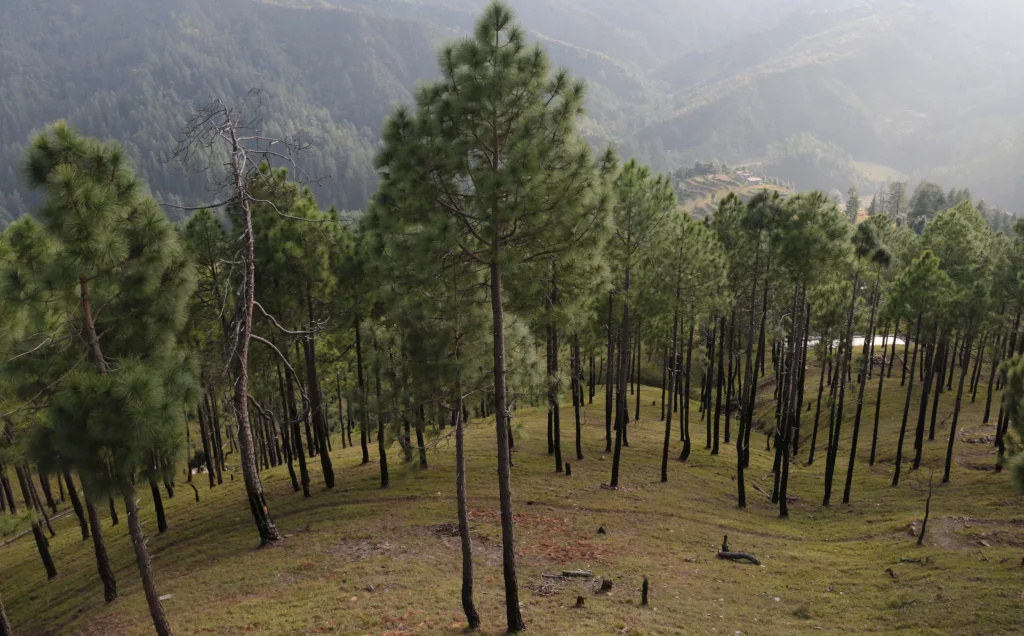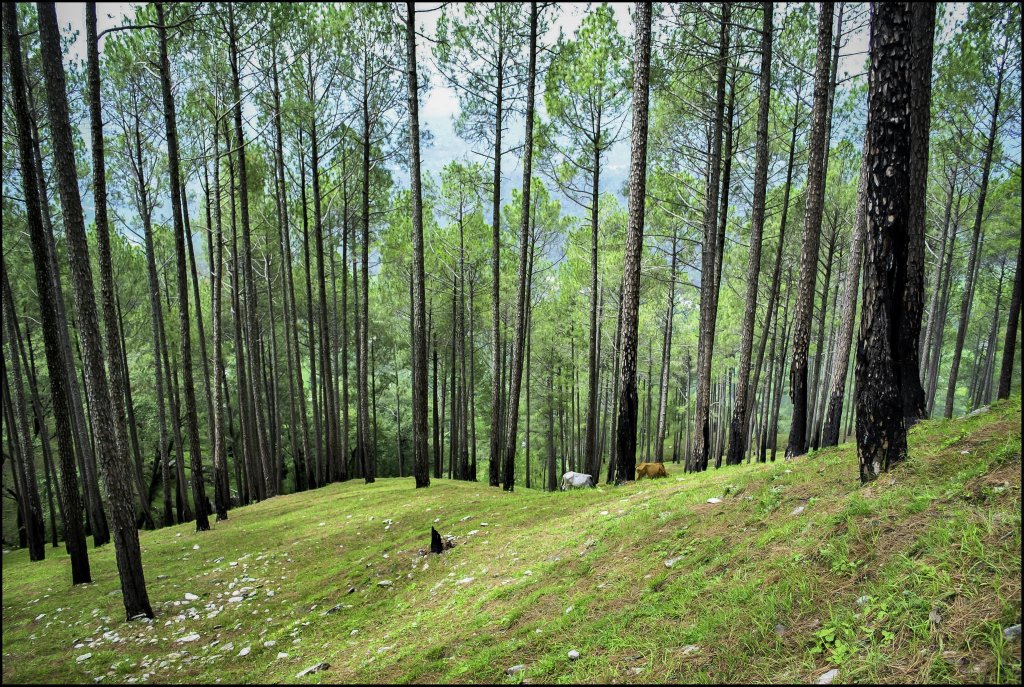The largest pine forest in India is the Himalayan subtropical pine forests ecoregion that is popularly known as the Chir pine forests.
Chir pine forests are known to have slender, tall trees that can go up to 50 meters. The leaves of the tree are needle-like, and they are randomly arranged in clustered form. The Chir forests are essential as they are a resin and timber source.
The Himalayan range for pine forests is quite vast and spread across 3,000 kilometers in general. The forest is home to various cultivars and species. One can suspect various plants, trees, and animals like monkeys, reptiles, deer, and birds.
The altitude of Himalayan subtropical forests is around 1,000 to 2,000 meters.
Facts About the Largest Pine Forest in India

There are several facts about pine forests that one needs to know. One should know all about region, distribution, soil type, flora and fauna, climate, and more for identifying types of pine trees.
A detailed study of all the concerning factors can help you understand more about the forest. Hence, keeping the same in mind, let us discuss different aspects of the Himalayan subtropical pine forests ecoregion.
-
- Distribution: The subtropical pine forest region is distributed between 73 degrees E and 88 degrees E longitudes and 1,000 to 2,000 levels above sea level in the western Himalayas. It can also be found in the regions of Manipur, Arunachal Pradesh, Khasi Hills, and Naga Hills.
- Climate: The monsoons from the Bay of Bengal, known as southwestern monsoon, range from May to September. As they are the first rainfalls in the region, they tend to be heavier.
- Soil: The rocks in the forest are covered with poor soil and leaves that serve as a medium rooting. As they are grown in elevated regions, the soil tends to be porous and well-drained.
- Flora: The trees found in the forest are teak, sal, shisham, pine, and juniper. Chir pine is the most popular species. Some trees offer medicinal herbs and shrubs such as Rubus and more.
- Fauna: There is a widespread fauna in the region as well; goral, barking deer, tigers, and leopards can be seen in the forests. Some birds like chestnut-breasted partridge, Ludlow’s fulvetta, Rusty-bellied short wing, and more are also there.
- Tribal Population: The pine forests are known to be home to many people who like to live near the forest. The people there are close to nature and perform ancient customs and rituals. Khasi, Jaintia, Garo, Lalung, and Rabha are some tribals.
- Economic Importance: People in the region highly rely on ecosystem goods. People consume wild plants and edible sources in day-to-day life. They also use fuel, medicines, and resin for livelihood and maintenance.
- Threats: This particular forest region is known to have numerous threats from society. The major destruction of forests is caused by farming, overgrazing, and farming. It is quite minimal, and they have larger allocations in the Jim Corbett National Park.
What Are the Effects of Pine Forests?

Pine trees are popularly used for resin tapping and offer turpentine oil. The leftover wood is also sometimes used for firewood and timber. However, apart from having so many positive effects, there are certain negative aspects of this ecoregion as well, and for your understanding, they are mentioned below.
- Fires: The leaves and needles of pine trees are highly inflammable, and they can be a cause for huge forest fires. The tree does not burn itself completely, but only the leaves are burnt.
- Poor Water Retention: The water holding capacity of pine trees is comparatively less as the bacteria contamination is also low. The capacity of soil decreases due to this reason, and water flows easily.
- Degraded Lands: Pine presence is a cause why there is less bacteria in the soil. Hence, due to less bacteria contamination, the soil loses its water retention capacity and easily becomes degraded.
- Biodiversity and Livestock Loss: Due to heavy forest fires, many animals and trees die. Due to this reason, the livestock and biodiversity in the region are comparatively low.
Conclusion
As we discussed earlier, Himalayan subtropical pine forests are the largest pine forests in India. It is widely spread across a large land area, and the forest has certain positive and negative aspects. Pine trees are spread widely across the region and serve various materials like timber, wood, medicines, and resin. They are also highly inflammable and cause forest fires quite easily.
Apart from all this, the region experiences quite prominent climate changes, and rainfall is also high in the area. The region’s soil does not hold any bacteria, as pine trees usually kill them, so it becomes porous and does not hold any water.
Lastly, the region has a wide range of flora and fauna, and one can spot many animals and birds. The human population is medium captivated in the area.

